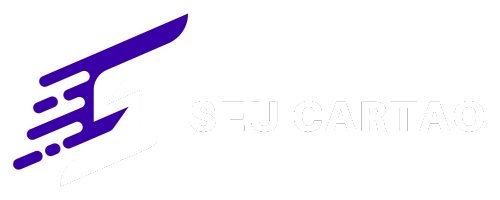Introduction
In today’s financial landscape, student loans have become a significant part of many individuals’ lives, enabling them to pursue higher education and career aspirations.
However, the complexities of student loan repayment, coupled with the burden of debt, can be overwhelming.
With that in mind, it has become crucial to understand the universe of student loans and debt management.
Throughout this discussion, we will delve into essential strategies and options designed to help you effectively manage your student loans. We will explore various aspects of student loan management, shedding light on topics such as loan forgiveness, income-driven repayment plans, and refinancing.
Our goal is to empower you with the knowledge and tools needed to make informed decisions about your student loans.
Whether you’re a recent graduate looking to kick-start your career, a seasoned professional seeking to optimize your loan repayment strategy, or simply someone interested in understanding the intricacies of student debt, this exploration will provide valuable insights and practical guidance.
By the end of this journey, you will have a clearer understanding of how to navigate the world of student loans, make choices aligned with your financial goals, and ultimately achieve greater financial freedom.
So, let’s embark on this educational odyssey together, arming you with the information needed to conquer your student loan challenges and pave the way towards a more secure financial future.
Public Service Loan Forgiveness (PSLF) Program
The Public Service Loan Forgiveness (PSLF) Program is a lifeline for individuals burdened with student loan debt while serving in qualifying public service or nonprofit positions.
This program offers a path to debt relief by forgiving the remaining balance on federal Direct Loans after making 120 qualifying monthly payments.
To be eligible for PSLF, you must meet specific criteria. First, you need to work full-time for a government organization (federal, state, local, or tribal) or a nonprofit organization classified as tax-exempt under Section 501(c)(3) of the Internal Revenue Code.
Additionally, you must make those 120 payments under a qualifying repayment plan while employed by an eligible organization.
The application process for PSLF involves submitting an Employment Certification Form annually or when switching employers. This form verifies your employment and ensures you’re on the right track.
After making the 120 payments, you can apply for loan forgiveness through the PSLF application.
The benefits of the PSLF program are substantial. Not only does it alleviate the financial burden of student loans, but the forgiven amount is tax-free.
This program allows borrowers to pursue careers in public service without the fear of overwhelming debt, making it an attractive option for those committed to serving their communities or working in nonprofit sectors.
In summary, PSLF offers a promising avenue for individuals dedicated to public service or nonprofit work to achieve student loan forgiveness after meeting specific eligibility criteria and successfully navigating the application process.
It stands as a valuable incentive for those seeking meaningful careers while managing their student debt responsibly.
Income-Driven Repayment Plans: A new perspective
Income-Driven Repayment Plans are a lifeline for many individuals burdened by student loan debt. They offer a way to manage loans based on your income, ensuring that monthly payments remain affordable.
Three popular options within this category are Income-Based Repayment (IBR), Pay As You Earn (PAYE), and Revised Pay As You Earn (REPAYE). Let’s take a look and understand how these plans work and how they can impact your student loan management.
- How They Work: Income-Driven Repayment Plans set your monthly loan payments as a percentage of your discretionary income. They consider factors like family size and income to determine the amount you can reasonably pay each month. This means that as your income fluctuates, so do your loan payments, making them manageable throughout your financial journey.
- How to Apply: Applying for these plans typically involves submitting your income and family size information to your loan servicer. They will then calculate your monthly payments based on the plan you choose.
- Potential Impact: Income-Driven Repayment Plans can significantly lower your monthly payments, making them more manageable. They also extend the loan term, which means you might end up paying more interest over time. However, the remaining loan balance can be forgiven after 20-25 years of consistent payments, making these plans a potential path to loan forgiveness.
Understanding the nuances of each plan, including their eligibility criteria and potential tax implications, is crucial when considering income-driven repayment options. These plans can be a valuable tool in achieving financial stability while managing student loan debt.
Conclusion
In conclusion, managing student loans effectively is a crucial aspect of securing your financial future, and there are various strategies to explore.
The Public Service Loan Forgiveness (PSLF) program offers a pathway to debt relief for those dedicated to public service, while income-driven repayment plans provide flexible options based on your income and family size.
Understanding these programs, their eligibility criteria, and application processes can make a significant difference in your student loan journey.
Moreover, considering loan refinancing options can potentially lower interest rates and monthly payments, making repayment more manageable.
Remember that student loan debt should be tackled with a well-thought-out plan, taking into account your individual circumstances and financial goals.
Whether you’re seeking forgiveness, pursuing income-driven repayment, or considering refinancing, informed decision-making is key.
So, take the time to research, evaluate your options, and create a strategy that aligns with your financial aspirations.
Don’t hesitate to seek guidance from financial advisors or resources provided by reputable organizations.
Ultimately, by making informed choices and staying proactive, you can navigate the complexities of student loan management with confidence. Your financial future awaits; take charge of it today.
Enjoyed our content? Explore our blog to unlock the secrets of financial freedom and take the first steps towards a brighter financial future today!”







